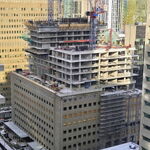Streety McCarface
Senior Member
This council video is just annoying. The councillor just wanted to know the cost and benefits of subway to Consumers vs “current” LRT plan, and if the City/TTC couldn’t provide this information, then he’ll still be fine. But then others “question” the info request by asking why not to McCowan? And the stupid “North York Relief Line” to Sheppard West. It’s unbelievable that “questions” were asked that were so outside of the scope of the item. That’s Council for you!
They're politicians, they care only about trying to make the lives of those in their ridings better. They will never recognize systemwide advantages/challenges (ie, how overcrowded the yonge line is, Sheppard West serving the Wilson yard, potential interlining the Sheppard and TYSSE subways) because they're not transit nerds like we are. Catchy phrase: "North York Relief", that'll gain support in their respective ridings. "Sheppard Subway Transfer to Wilson Yard", no one will give a damn.






